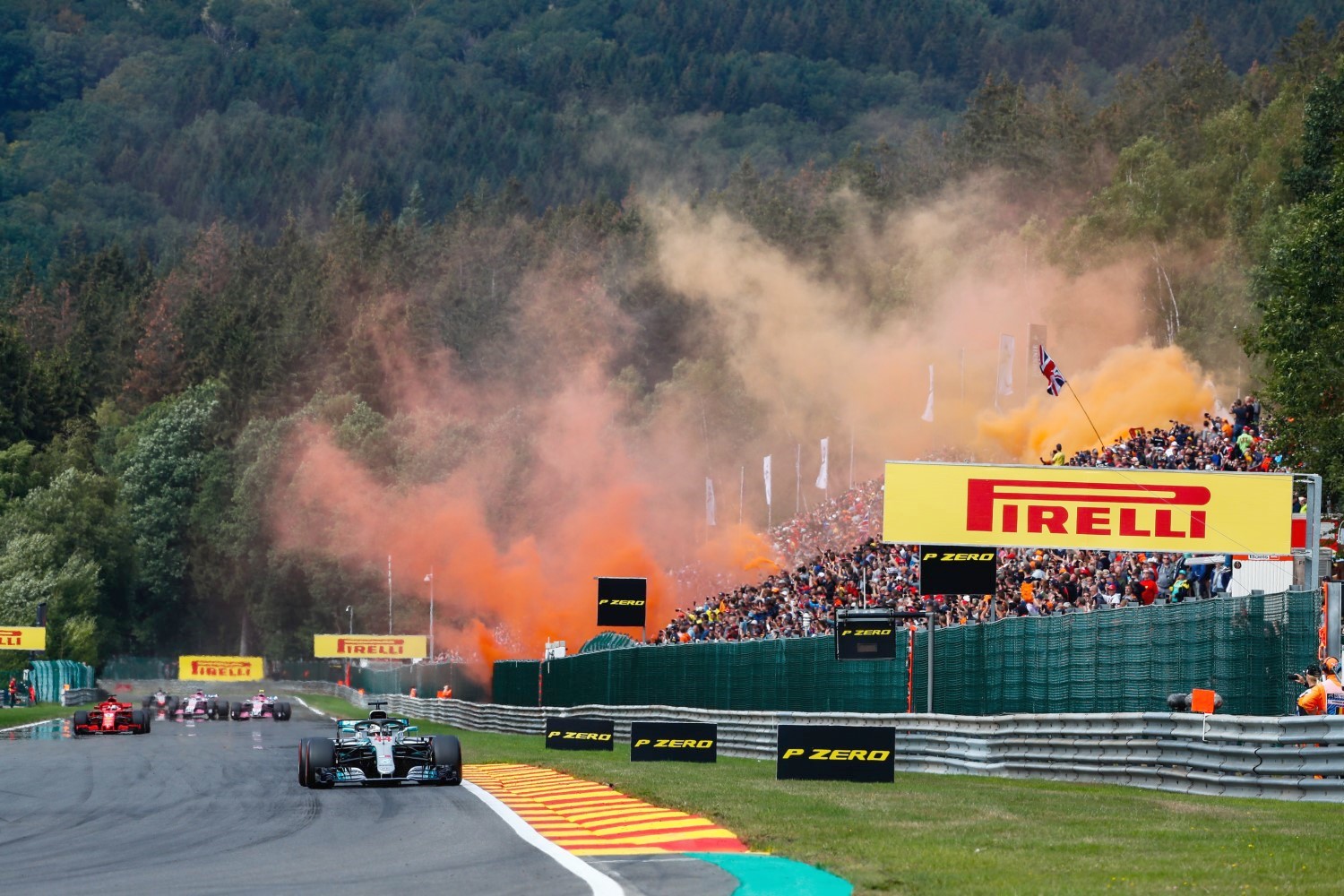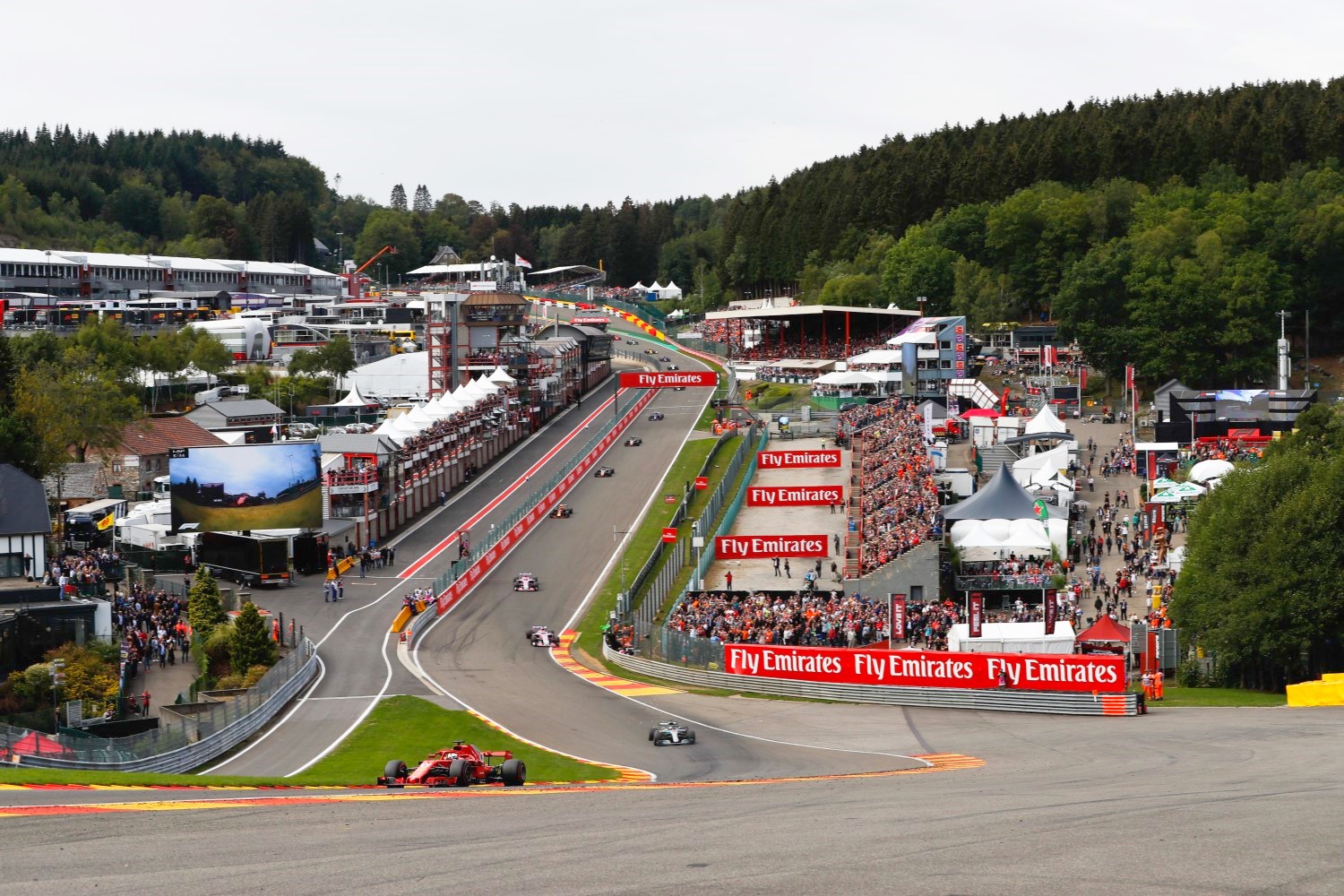F1 Belgium GP Preview
Introduction
Formula One usually travels to Spa-Francorchamps for the Belgian Grand Prix after a period of rest and respite but in 2020 matters are of course a little different. There has been no summer recess this year and instead Haas F1 Team is gearing up for a fourth race in August, this time at the venerable Circuit de Spa-Francorchamps.
Located in Belgium’s picturesque Ardennes Forest, the circuit was born 99 years ago in 1921 when the triangle formed by the roads linking the villages of Francorchamps, Malmedy and Stavelot were used for a motorcycle race. Four-wheeled machines soon joined the scene and the Belgian Grand Prix
was created, with its original fearsome 14km road circuit part of the inaugural Formula One world championship season in 1950.
The current track remains a favorite of Formula One drivers and stretches out over 7.004km across the undulating landscape, featuring fast and sweeping corners such as Pouhon, Blanchimont and of course the Eau Rouge/Raidillon complex, revered throughout the motorsport environment. It is the longest circuit on the calendar, 1.1km longer than Silverstone, and poses a set-up challenge for teams, with the throttle-heavy first and third sectors counterbalanced by a lengthy middle segment that incorporates medium- and high-speed turns. Teams also need to keep an eye on the sky: Spa-Francorchamps’ location within the Ardennes Forest means it is susceptible to changeable conditions, with showers known to strike some corners while others remain bone dry.

Five Things to Look Out for in Spa
Eau Rouge and Raidillon are certainly iconic Formula 1 corners – but the challenge has changed over the years. With the current generation of cars, this section is taken flat, meaning there’s effectively a two-kilometer straight run to Les Combes. That doesn’t make it easy, though. This section is hugely demanding on the suspension.
Spa’s first and third sectors reward good engine power and low drag. By contrast, the second sector is slow – more suited to a higher downforce set-up and actually comparable to Monaco in some respects. This creates quite a headache for the engineers. As a high-efficiency circuit, there’s a balance to be struck in how much downforce you’re willing to keep on the car, knowing it will lead to the drawback of extra drag on the high-speed straights.
The Circuit de Spa-Francorchamps is the longest lap on the Formula 1 calendar and features plenty of high-speed corners such as Pouhon and Eau Rouge, creating one of the highest average speeds of the season at nearly 250km/h.
When you think of rain and Formula 1, you immediately imagine the unpredictable! That takes on extra meaning at Spa, where a wet to dry circuit tests your strategic mettle. As one of the longest laps on the calendar, switching to slicks a lap too early or a lap too late can have significant consequences on your race.
Spa is one of the easiest circuits on the calendar for overtaking – which is also an important factor in race strategy. While the likes of Checo could run longer tyre stints in the Spanish Grand Prix in the knowledge that the circuit’s lack of overtaking opportunities would help him hold track position, it’s much more difficult to pull off a similar trick at Spa.

Fact File: Belgian Grand Prix
- Spa-Francorchamps is F1’s longest track with a lap distance of 7.004 kilometers. This tops the second circuit on the list, Baku (6.003 km), by just over one kilometer.
- Because of its long lap distance, the Belgian Grand Prix has the lowest number of race laps in F1 with only 44 – making a race distance of 308.5 km.
- Drivers experience 5.2g through Spa-Francorchamps’ high-speed Turn 10, known as Pouhon. This is the highest lateral g-force of the season.
- F1 drivers keep their foot firmly planted on the throttle from the exit of La Source (Turn 1) to the braking zone for Les Combes (Turn 5). That’s an uninterrupted flat-out blast for almost 23 seconds and 1,875 meters of the track layout
- The run from pole position to the first braking zone at Spa-Francorchamps is one of F1’s shortest at just 150.4 meters. The longest run from pole to Turn 2 in Sochi is almost six times longer at 890.6 meters.
- The exit of La Source is one of the most important sections of the lap, due to the flat-out section that follows. It is particularly important on the first lap, when the field is bunched up and cars behind can benefit from a considerable tow up to Les Combes.
- F1 drivers take 77.9% of the lap distance at full throttle, the fifth highest percentage of the season.
- Despite having the longest lap in F1, drivers only change gear 38 times for each circulation of Spa, one of the lowest figures in F1. This is particularly low when compared to the busy laps of Monaco, where drivers change gears around 50 times per lap – on a track that is less than half the length of Spa (3.337 km).
- The main reason for the relatively low number of gear changes per lap is that a large portion of the lap at Spa is covered in top gear. Additionally, most of the corners that require gear changes come in groups – for example, Turn 5 to Turn 7. Over the length of the entire 7.004 kilometers of lap distance, there are only six sets of gear changes required.
- Spa-Francorchamps has the largest elevation change in F1, with a difference of around 100m between the highest and lowest points – the final part of Les Combes (Turn 7) being the highest and Stavelot (Turn 15) being the lowest.
- Engineers have to find a good balance for the car in Spa in terms of downforce levels and car set-up. The first and third sectors feature long straights and flat-out sections, while the second sector is much more twisty. Running a bigger wing will be beneficial in that middle sector but will leave you vulnerable on the straights. Meanwhile, a smaller wing will provide less drag for the straights but not give you the same kind of grip levels to tackle that second sector.
- Spa’s lap distance can throw up various challenges for the teams and drivers. If a car suffers damage early in the lap, it’s an incredibly long trek back to the pits in that state and can cost a huge amount of race time as a result. The same can also be said for changeable weather conditions, such as the transition from wet to dry tires. If the wrong call is made, you have to do the entire 7.004 km lap on the slower tyre, which could prove costly. Equally, if the right call is made, it can bring big rewards.
- The weather at Spa-Francorchamps is notoriously unpredictable and because of the long lap, it’s not uncommon for some parts of the track to be soaked in water and others be bone dry. The amount of water around the track can be incredibly varied and this makes strategy calls even more difficult
Who Will Win?
The odds on favorite is Lewis Hamilton with his teammate Valtteri Bottas a distant 2nd.
Max Verstappen has the 3rd best odds to win.
No one else has a chance
